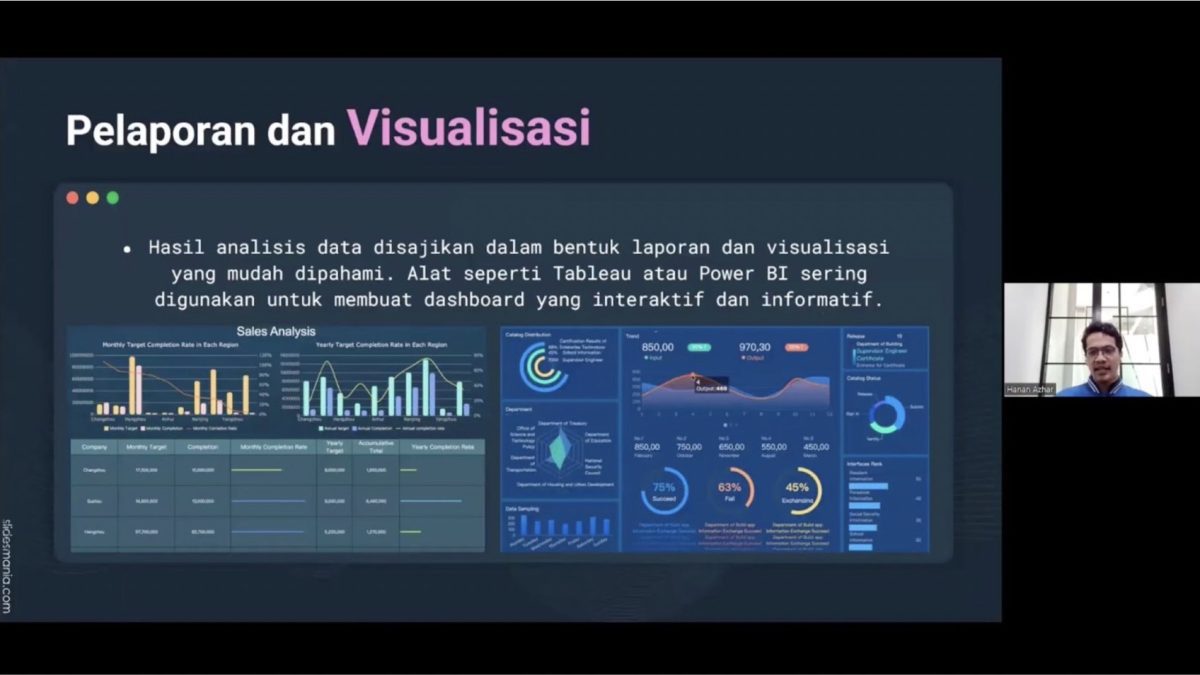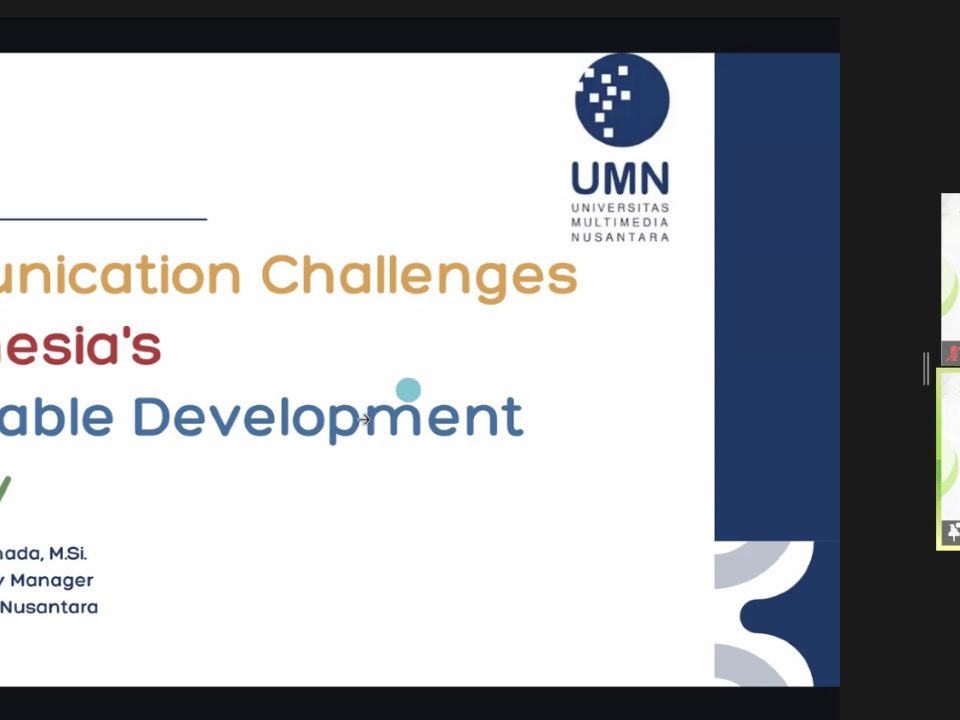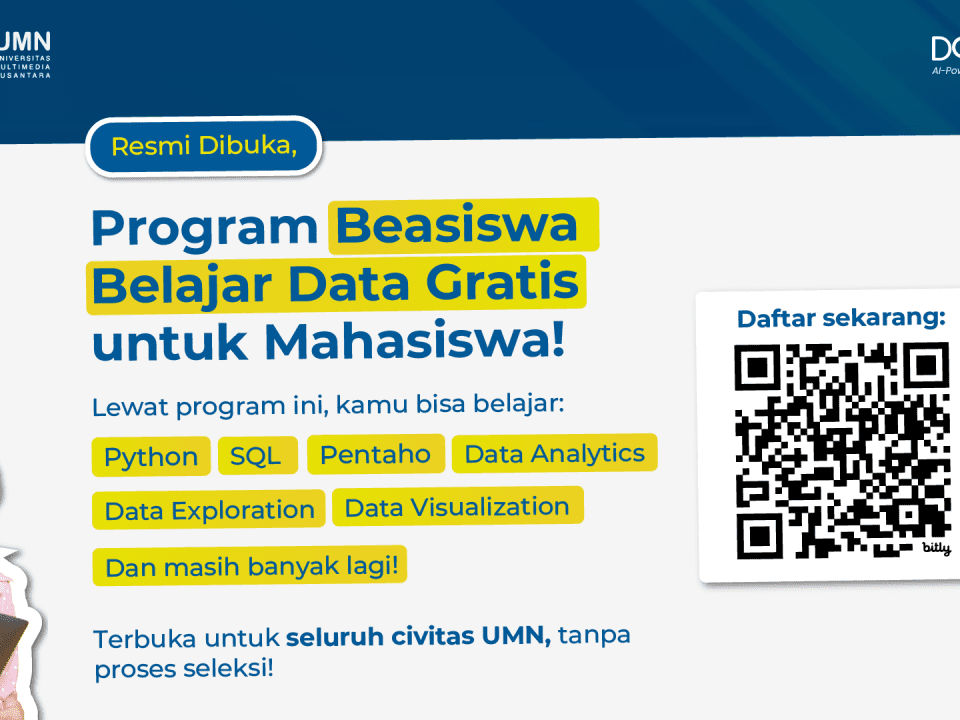
UMN Celebrates Strategic Alliance with Monash University Indonesia
August 16, 2024
LPPM UMN X Tangerang Regency Government Holds SEHATI Program and Share Eco Enzymes
August 16, 2024
Tangerang – Who wouldn’t want to work in the data field with an exorbitant salary and bright career prospects? The world of data today is not only about numbers but also about how we can turn data into insights that make companies more profitable! Well, DQLab recently held another Free Class, Batch 42, titled “Understanding the World of Work in the Data Field: Activities, Careers, and Roles.” In this activity, DQLab invited Hanan Azhar, an AR Management Support Analyst at Astra Credit Companies, as a resource person who shared knowledge and practical tips for those who want to enter the world of data. Starting from tools that must be mastered, visualization tricks to make your data more beautiful, and salary leaks that make you drool! Let’s see the discussion and get ready to upgrade your skills to get your dream career in the data field!
Hanan started this activity by explaining how daily work activities are carried out in the data field because each position has a different function. Generally, the work activities carried out in the data field are collecting, cleaning, and analyzing data. They use tools such as SQL, Python, R, Tableau, Looker Studio, and others to produce accurate reports that can be useful for business decision-making.
Hanan also quoted the former CEO of Hewlett Packard, who said, “The goal is to turn data into information and information into insight.” Therefore, a beginner or professional working in the field of data must be able to master the hard and soft skills needed in processing, presenting, and conveying data so that the processed data’s results are not only good in appearance but also good in content.
Furthermore, he also explained how to report and visualize data so that the data produced is easy to understand. Usually, in this process, data workers use interactive data visualization tools such as Power BI and Tableau to make the information in the graph or dashboard created easier to read.
“Reporting and visualization are actually not only in the form of dashboards, charts, and others. However, how we deliver the data is also included in reporting, where we attach visualizations to strengthen the data in the delivery process,” Hanan said.
In the middle of the session, Hanan also provided interesting facts about the salary prospects that can be obtained by workers in the data field. Based on a survey quoted by Hanan, jobs in the data field are in great demand because they have competitive salaries. Starting salaries for entry-level positions can vary but are generally relatively high. For example, entry-level positions can get a salary range of Rp8,000,000 – Rp12,000,000. Professionals with experience and specialized skills can also earn higher salaries. In addition, X factors affect salary, such as the size of the company, type of company, location, position class applied by the company, and so on.
Continuing the discussion, Hanan reviewed the career prospects in the data field. Currently, working in the data field requires the ability to use tools and maximize and utilize interpersonal skills to convey opinions, work together, and communicate with teams to make decisions and develop the best business strategies. This really determines the development of one’s career in the data field in the future, so anyone who works in the data field must be willing to develop themselves.
At the end of the session, Hanan also reviewed the differences between the three main job positions in the data field: Data Analyst, Data Scientist, and Data Engineer. According to him, Data Analysts focus on data interpretation, preparing reports, helping business decision-making with reports, and helping make business decisions with various database processing tools such as SQL and data visualization tools to analyze data and provide insights.
Unlike the Data Analyst, a Data Scientist focuses on using statistical and machine learning methods to create predictive and prescriptive models. Data Scientists typically use programming languages such as Python or R and must have expertise in statistics and algorithms. Finally, Data Engineers are responsible for building and managing data infrastructure. They are usually also required to ensure data is available, accessible, and well-structured for analysis. They use tools like Hadoop and Spark and databases like MySQL or MongoDB.
Therefore, reflecting on his experience coming from a non-IT field, Hanan also highly recommends beginners who want to learn and start a career in data take a professional course with DQLab’s Bootcamp Live Class. There are many choices of classes according to each role you want to learn, a learning curriculum adapted to industry needs comprehensively, complete modules with Live Code Editor features, and 24-hour AI Chatbot assistance that can help beginners learn optimally.
In addition, DQLab has also implemented the HERO (Hands-On, Experiential Learning & Outcome-based) learning method, designed to be beginner-friendly and has been proven to produce excellent talents who have successful careers in the data field. So, what are you waiting for? Prepare yourself for a career in data by signing up or joining Data Analyst Bootcamp with SQL and Python right now!
By Lisya Zuliasyari | DQLab
English translation by Levina Chrestella Theodora
Kuliah di Jakarta untuk jurusan program studi Informatika| Sistem Informasi | Teknik Komputer | Teknik Elektro | Teknik Fisika | Akuntansi | Manajemen| Komunikasi Strategis | Jurnalistik | Desain Komunikasi Visual | Film dan Animasi | Arsitektur | D3 Perhotelan , di Universitas Multimedia Nusantara. www.umn.ac.id





